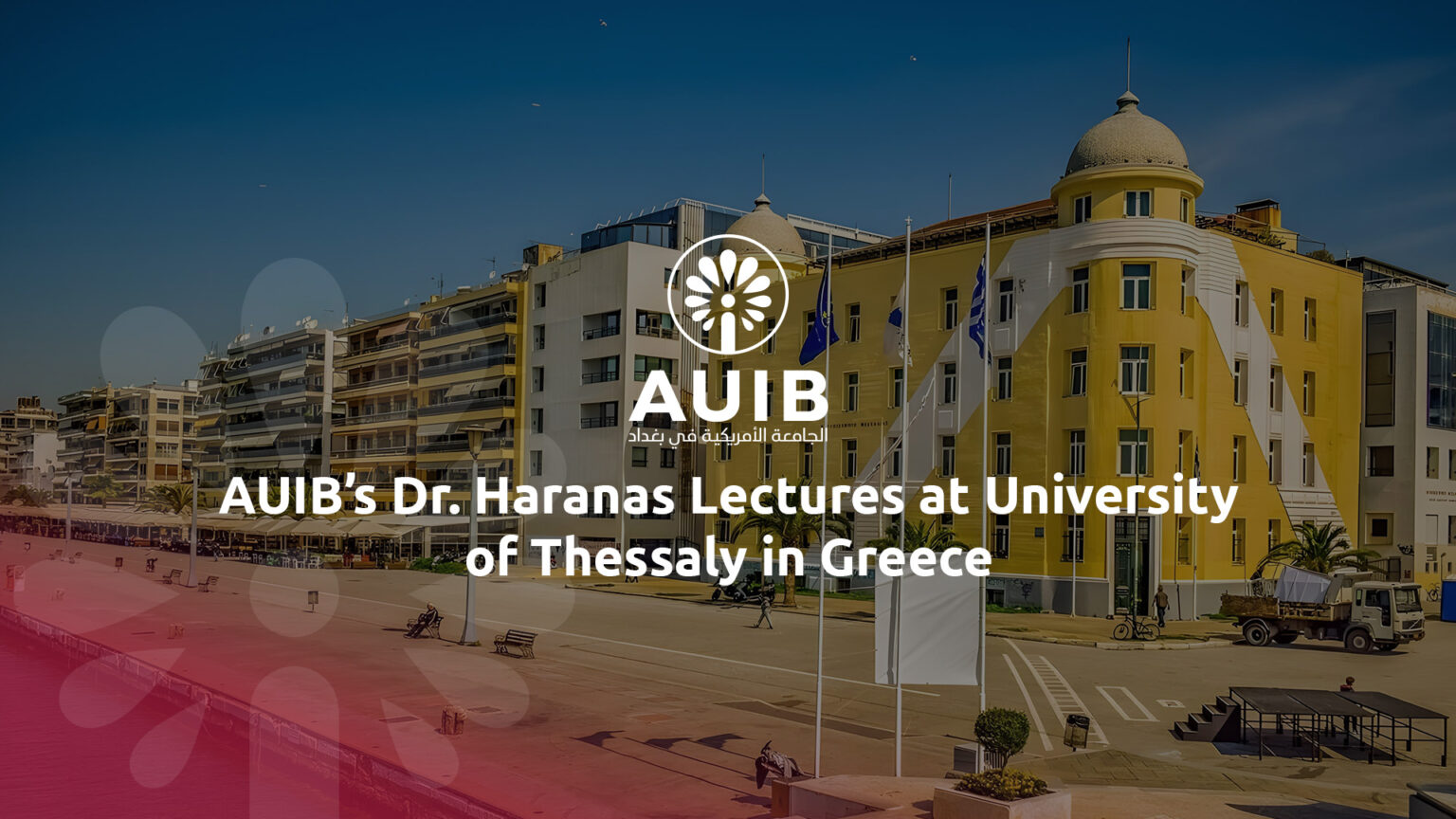Associate Professor of Astrophysics at the American University of Iraq-Baghdad (AUIB), Dr. Ioannis Haranas, visited the University of Thessaly, Greece, where he was invited to give a lecture on the phenomena of “Black Holes, White Holes, and Worm Holes” at a summer school co-organized by the Astronomy and Space Society. Dr. Haranas engaged the audience of mostly high school students, but also esteemed professors in the field, in a discussion on the physics and mathematics of these mysterious astronomical phenomena.
The astronomy summer school trains youngsters at various ages, many of whom then participate in astronomy Olympiads; those who are decorated with medals are sent to the United States’ National Aeronautics and Space Administration (NASA) so that they familiarize themselves with NASA programs for further studies in astronomy, astrophysics and space science.
“The subject of Black Holes is a very important and difficult subject in astrophysics, involving work within the framework of the general theory of relativity and complex calculations. It is very paradoxical at the same time, because the physics of Black Holes violate common sense… for example, time stops and mass shrinks and becomes a singular point, where density is infinite and all the laws of physics brake down at the anomaly point called the singularity” explains Dr. Haranas, citing the capture of images of a massive Black Hole by the Webb Telescope and saying, “now we know for sure that general relativity and black holes are not purely theoretical, but things that actually happen in the universe.” White Holes and Worm Holes, on the other hand, are things that “we haven’t seen yet,” says Dr. Haranas, explaining that White Holes “are time reversals of black holes in thermal equilibrium”, as they “spit out matter and energy” rather than suck them in. The theory of Worm Holes is a rather wild one, as the phenomenon has been thus far “seen only in Hollywood movies,” says Dr. Haranas jokingly, presenting the concept as that of a structure connecting two different points in the universe that are very distant from each other, but joined by the “bending of the space-time continuum,” forming a tunnel between the two points!
Dr. Haranas’s trip serves to contribute to the continuous growing of AUIB’s network of international collaborations, as several professors whom Dr. Haranas met in Greece expressed their willingness to collaborate in research projects with AUIB faculty, as well as visit AUIB and deliver lectures in specialized topics of theoretical and applied sciences.
